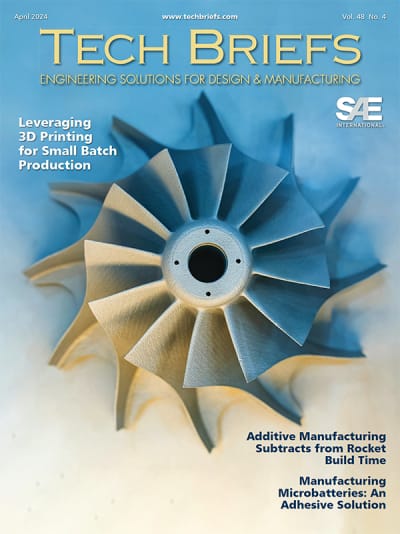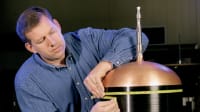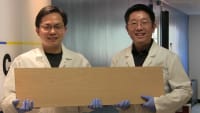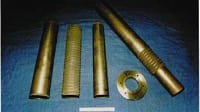Robust, high-temperature containment cartridges are needed for processing materials science experiments in microgravity. In general, the refractory metals (Nb, Ta, Mo, W, Re) possess the chemical inertness and high melting temperatures desired. Of these materials, niobium and tantalum alloys have been the materials of choice due to their low ductile to brittle transition temperatures, which allow deep-draw forming into cylindrical shapes. The high cost of tantalum and niobium, along with the desire for cartridges resistant to molten zinc and usable to 1,500 °C, demonstrates the need for alternative cartridge materials. Two candidate materials are molybdenum and tungsten alloys. Both have high melting temperatures and cost an order of magnitude less than tantalum and niobium.
A plasma alloying and spheroidization (PAS) process was developed to produce pre-alloyed molybdenum-rhenium and tungsten-rhenium powders. The use of pre-alloyed powders will allow fabrication of robust, high-temperature containment cartridges that will have optimum properties for microgravity processing.
During PAS, elemental and blended powders are fed into a plasma, where melting occurs and surface tension causes spherical droplets to be formed. It is during this molten stage of the process that alloying takes place. As the droplets pass out of the plasma, they rapidly solidify and are collected. If needed, auxiliary cooling gases can be used to enhance powder cooling. A 120-kW Sulzer-Metco plasma gun was used to develop the process for producing pre-alloyed, spherical powders from elemental powder blends. A plasma torch was chosen because plasma temperatures approaching those of the surface of the Sun (>10,000 K) can be obtained. With the proper starting powders and gun design, these temperatures should be sufficient for producing prealloyed refractory metal powders.
Non-uniform powder needed for the production of microgravity cartridges, crucibles, emissivity coatings, etc., can be made significantly better with PAS. Benefits of the PAS process such as a two-order magnitude reduction in oxygen contamination, enhanced flow characteristics, the ability to produce prealloyed refractory metal powders, and the ability to reduce post-spray processing time were demonstrated.
This work was done by Richard R. Holmes, Edgar Carrasquillo, and Richard Hagood of Marshall Space Flight Center; and J. Scott O’Dell and Timothy N. McKechnie of Plasma Processes Inc. For more information, contact Ronald.C.Darty, Licensing Executive in the MSFC Technology Transfer Office, at






















